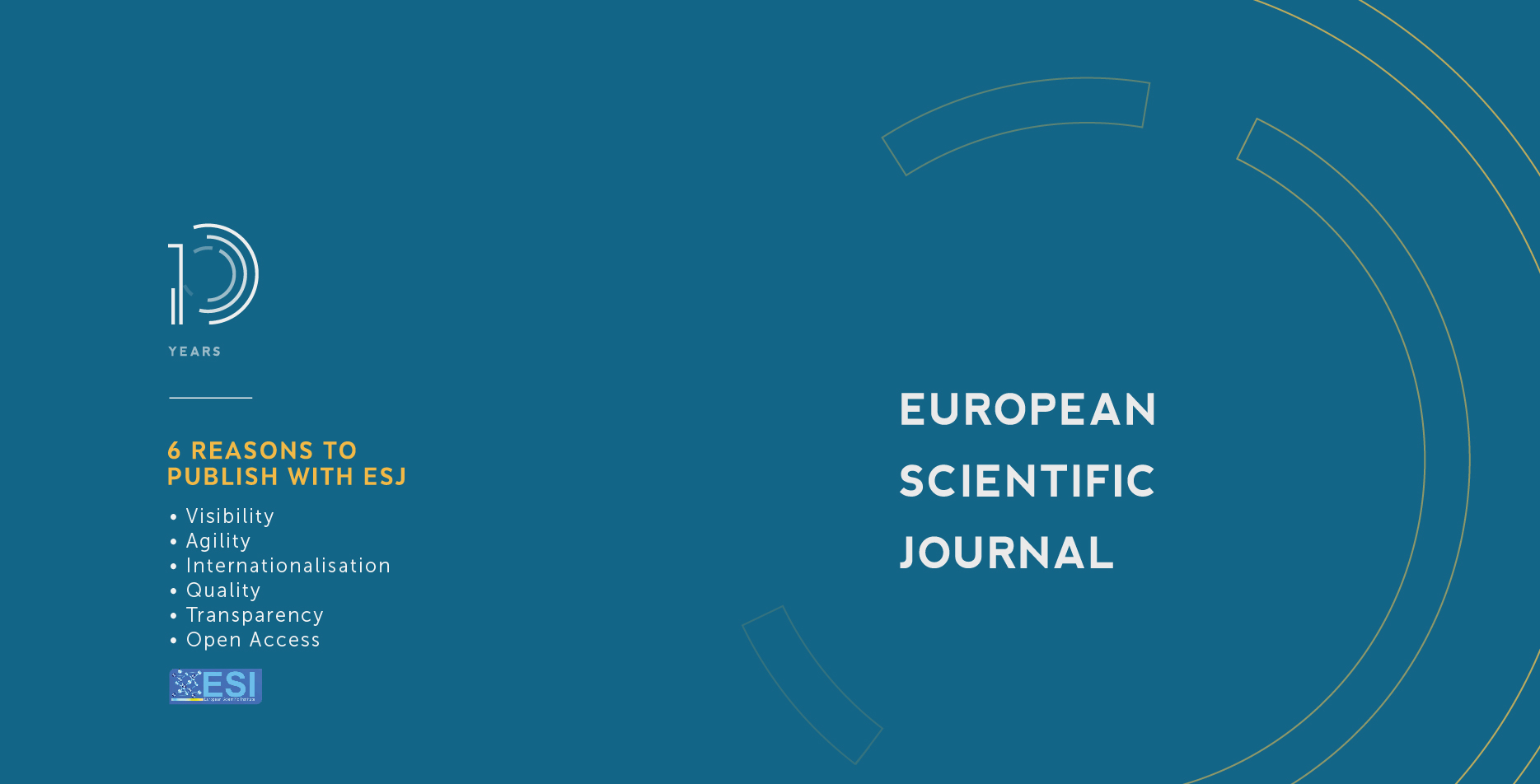Urban and Social Regeneration in Abruzzo: An Open Problem and a Possible Way Forward
Abstract
Urban and social regeneration occurs through the recovery of disused built-up areas, requalifying them with respect to environmental sustainability and the recovery of the relational relationship between social actors. In the last few years, the practices of sociourban regeneration have made great strides, establishing themselves as an opportunity to promote policies of social participation, stimulating employment, and local entrepreneurship. Sociourban regeneration can thus be defined as a set of actions that focuses on the recovery of sociality and the requalification of an urban space. The regeneration process takes place by means of rehabilitation interventions at the level of infrastructures and services, thereby limiting the consumption of land in order to protect environmental sustainability. Regeneration also allows the community to re-appropriate and re-live the regenerated spaces with clear improvements in the quality of life and in the social, economic, and environmental spheres. This paper focuses on exploring the relationship between urban and social regeneration and economic growth in Abruzzo (Italy) by using a set of indicators that measures equitable and sutainable welldoing (Bes). A descriptive analytical method was adopted to evaluate the level of urban quality in order to identify the most appropriate interventions leading to sustainable local development. The main finding indicates that Abruzzo shows interesting potential, but it has yet a long way to go in the area of urban and social regeneration.
Downloads
Metrics
PlumX Statistics
References
2. Agnoletti, C. & Bocci, C. (2014). Gli effetti economici e distributivi degli interventi di riqualificazione urbana. XVII Congresso nazionale Associazione italiana di Valutazione, Napoli.
3. Audretsch, DB. (2003). Innovation and spatial externalities. International Regional Science Review 26(2): 167-174.
4. Bagnasco, C. (2005). Piano e qualità urbana. Appunti su alcuni aspetti metodologici. Aracne, Roma.
5. Barbarossa, L., La Rosa, D., Martinico, F., & Privitera, R. (2014). La rigenerazione urbana come strumento per la costruzione della città sostenibile. Università di Catania, Catania.
6. Becattini, G. (2000). Il distretto industriale. Rosenberg & Sellier, Torino.
7. Cantore, N. (2010). Obiettivi e metodi del delinking ambientale. In Ferlaino F (a cura di) Strumenti per la valutazione ambientale del territorio. Franco Angeli, Milano.
8. Carrillo, JC. (2004). Capital cities: a taxonomy of capital accounts for knowledge cities. Journal of Knowledge Management 8(5): 28-46.
9. Cappellin, R., Ferlaino, F., & Rizzi, P (eds.) (2012). La città nell’economia della conoscenza. Franco Angeli, Milano.
10. De Ciutiis, F. (2008). Interventi di trasformazione, qualità urbana e valorizzazione immobiliare. Dipartimento di Pianificazione e Scienza del Territorio, Università Federico II, Napoli.
11. Favaretto, I. (2000). Le componenti territoriali dello sviluppo. Carocci, Roma.
12. Fratesi, U. & Senn, L. (2009). Regional growth, connections and economic modelling: an introduction. In Fratesi U, Senn L (eds.) Growth and innovation of competitive regions. The role of internal and external connections. Springer-Verlag, Berlin.
13. Garofalo, G. & Mazzoni, R. (1994). Sistemi produttivi locali: struttura e trasformazione. Franco Angeli, Milano.
14. Herman, ED. (1981). Lo stato stazionario. L’economia dell’equilibrio biofisico e della crescita morale. Sansoni, Firenze.
15. Hirschman, AO. (1968). La strategia dello sviluppo economico. La Nuova Italia, Firenze.
16. Ipole, PA. & Okpa, JT. (2019). Working conditions and employees’ productivity in Cross River State Civil Service, Nigeria. European Scientific Journal 15(8): 132-143.
17. Istat (1997). I sistemi locali del lavoro 1991. Istituto Poligrafico e Zecca dello Stato, Roma.
18. Istat (2020). Italian data for UN-SDGs. Sustainable development goals of the 2030 agenda. Istat, Roma.
19. Landini, P. (ed.) (1999). Abruzzo, un modello di sviluppo regionale. Società Geografica Italiana, Roma.
20. Martincigh, L. (2003). Qualità urbana e mobilità sostenibile. Urbanistica Tre, Dipartimento di Studi Urbani, Università degli Studi Roma Tre, Roma.
21. Mascarucci, R. (ed.) (2011). Fattibilità e progetto. Territorio, economia e diritto nella valutazione preventiva degli investimenti pubblici. Franco Angeli, Milano.
22. Mauro, G. (2019). L’evoluzione economica dell’Abruzzo. Uno sguardo su settant’anni di cambiamenti. Casa Editrice Carabba, Lanciano.
23. Mostafa, SAF. (2018). The role of sport programs in peace building. Anthropological study at El-Zhour Club in Cairo. European Sceintific Journal 14(29): 244-264.
24. Moulaert, F. (2009). Social Innovation: Institutionally Embedded, Territorially (Re)produced, in MacCallum D, Moulaert F, HillierJ, Vicari S. (eds.) Social Innovation and Territorial Development. Ashgate, London.
25. Mulino, M. (a cura di) (2014). L’economia abruzzese nella crisi globale. Il Mulino, Bologna.
26. Njuguna, RK., Makau, MS., & Kerre, FP. (2014) The moderating effect of industrial context on the relationship between brand equity and consumer choice in branded bottled water Nairobi, Kenya. European Scientific Journal 10(4): 337-349.
27. OECD (2002). Indicators to measure decoupling if environmental pressure from economic growth. OECD, Paris.
28. Penco, L. (2012). Le grandi città come poli di consumo immateriale e poli di produzione della conoscenza. In Capellin R, Ferlaino F, Rizzi P (eds.) Le città nell’economa della conoscenza. Franco Angeli, Milano.
29. Perloff, HS. (1963). How a region grows. Supplementary paper n. 17. Committee for Economic Development, New York.
30. Pyke, F. (1992). Industrial development through small-firm cooperation: theory and practice. International Labour Office, Ginevra.
31. Quansah, C., Frimpong, A., & Nensah, RO. (2020). Factors influencing the effects of large-scale land acquisition on the livelihood of smallholder farmers in the Pru District of Ghana. European Scientific Journal 16(11): 159-177
32. Simon, C. (1998). Human capital and metropolitan employment growth. Journal of Urban Economics 43(2): 223-243.
33. Svimez (2000). I conti economici delle regioni italiane dal 1970 al 1998. Il Mulino, Bologna.
34. Svimez (2001). Rapporto Svimez 2001 sull’economia del Mezzogiorno. Il Mulino, Bologna.
35. Uzobo, E. & Dawodu, OA. (2015). Ageing and health: a comparative study or rural abd urban aged health status in Bayelsa State, Nigeria. European Scientific Journal 11(14): 258-273.
36. Veraldi, R. (2002). Politica sociale e analisi del territorio. Un caso concreto nella provincia di Teramo: il quartiere Annunziata. Homeless Book, Faenza.
Copyright (c) 2022 Roberto Veraldi, Sandra Carballar

This work is licensed under a Creative Commons Attribution-NonCommercial-NoDerivatives 4.0 International License.








